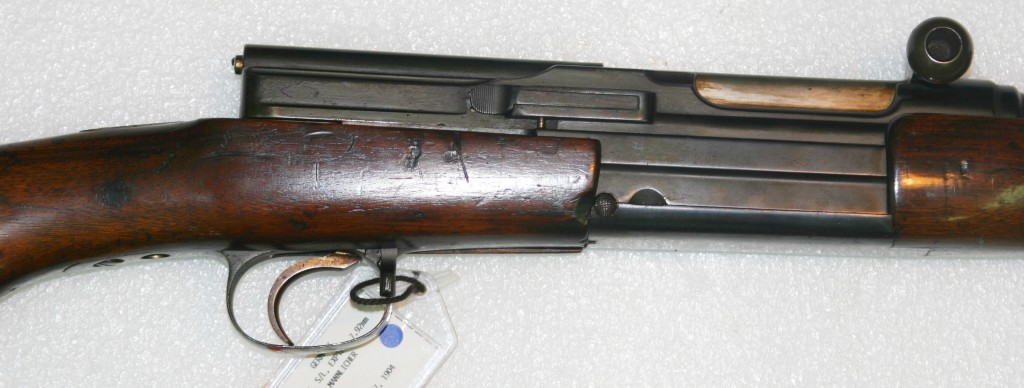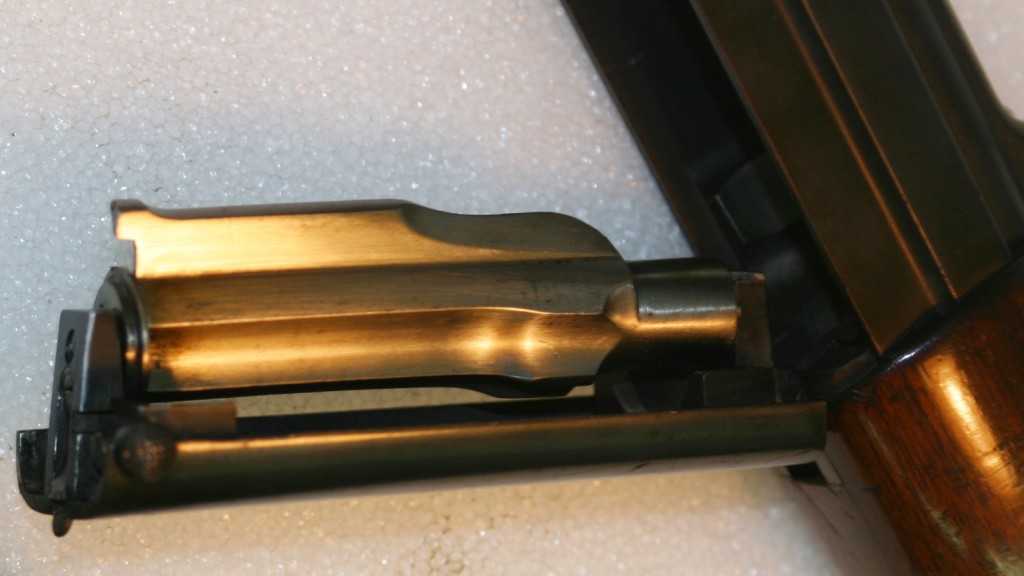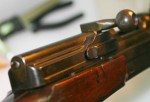
Before we can really take a close look at today’s rifle, some background is necessary. Ferdinand von Mannlicher was a very successful Austrian gun designer, with patents on several major ideas, and successful rifle and pistol designs. His “packet” clip-loading system was the world standard for some time, and was used in many early bolt action rifles (and in the US M1 Garand, for that matter). His series of automatic pistols was not quite so popular, but was probably the number 3 system in the world at the time (behind the Mauser and Bergmann guns).
Our story today begins with his 1897 pistol, which was his first one to use a locked breech. It was short-recoil operated, and used a tilting block to lock. We previously did a video on the carbine version of this pistol (which uses the exact same mechanism), and I would recommend taking a look at that video to see how it works, and the 1905 rifle uses the same principles: Mannlicher 1901 Carbine.
That pistol was chambered for a small pistol cartridge, and what Mannlicher wanted to do was scale up the system for a full-power rifle cartridge, in an effort to win some military contracts. He built at least one prototype in 8mm Mauser before his plans were unfortunately interrupted by his death in January 1904 (the patent on this rifle was actually issued to his widow on behalf of his estate).

The rifle uses a short recoil system, in which the barrel and bolt assembly travel backwards together for about 15mm. The two are locked together by a tilting block which pivots on the bolt and locks into a shoulder which is attached to the barrel extension (this is backwards from the pistol, in which the wedge pivots on the frame and locks against the bolt). As with the pistol, the trigger and magazine assemblies remain stationary, and the upper half of the rifle recoils back above them. During that recoiling movement, the tilting wedge is pushed up flush with the bolt and out of engagement with the locking shoulder, which allows the bolt to continue moving backwards when the barrel stops. It then extracts and ejects the empty case, as in all semiauto actions, and a recoil spring pushes it back into battery, loading a new cartridge.

One other neat feature of the rifle is that it uses a Schönauer type rotary magazine, much like the 1903 Greek Mannlicher bolt action rifle. The Mauser-style internal box magazine was well known by the time this rifle was being built, but Schönauer was Mannlicher’s friend and he no doubt preferred the rotary system to anything made by his competitors at Mauser.

The military intent of this rifle is clear from the bayonet lug, front band, sling swivels, and Lange rear sight, all made to the same pattern as the standard-issue Gewehr 98 rifle in service at the time.


This particular example is housed at the National Firearms Centre in the UK (aka the Pattern Room), and I would assume that it was sent to the UK for testing by Steyr back when it was made. Whether it was ever actually tested and how those tests turned out, I have no idea. My reference books on Mannlicher rifles don’t mention this design, so all I really have to go on are the photos of the rifle and the patent which accompanied it (see below).
Patents
US Patent 728,739 (F. Ritter von Mannlicher, “Automatic Firearm”, May 19, 1903) – patent for the Mannlicher pistol/carbine
US Patent 804,748 (F. von Mannlicher, Deceased, “Small Arms Having Automatic Breech Action”, November 14, 1905) – patent for the 1905 rifle
Photos
























This is entirely novel to me. Neat!
https://www.gunsinternational.com/guns-for-sale-online/rifles/steyr-rifles/rare-experimental-mannlicher-1905-sporting-carbine-serial-number-1-g-i-bring-back-from-ww2-.cfm?gun_id=101798971